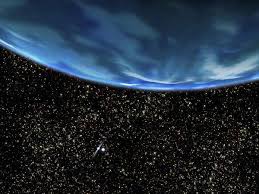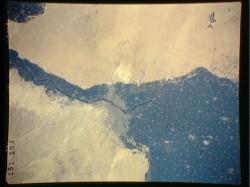One thing we can all agree on here. Nobody likes mosquitoes. But our
hatred for these pesky insects is also intertwined with an ironic
interest to know more about them. Here are some mosquito facts you may
not know and a few facts that may help you from becoming of victim of
their love bites.
1. Females Mosquitoes Can Live Twice as Long
Just like humans, the female is known to outlive the male but by a much larger difference. Given the right environment, an adult female can live over a month while males normally do not make it past two weeks.
2. Only Female Mosquitoes Bite
In reality, they don’t bite, but suck. After finding her target she inserts the elongated, razor-sharp proboscis (their mouth equivalent) through the skin looking for a blood meal which will nourish her future eggs. If left undisturbed, the female will feed until her abdomen is completely full.
3. A Popularity Contest?
To mate, the males form large swarms at dusk and the females enter to take their pick. And for mosquitoes, it’s not the size that counts. Studies show that medium-sized males attract the most females because of their ability to stay up (in the air) longer.
4. Finding a Perfect Harmony
To mate, the males form large swarms at dusk and the females enter to take their pick. And for mosquitoes, it’s not the size that counts. Studies show that medium-sized males attract the most females because of their ability to stay up (in the air) longer.
5. Mosquitoes Don’t Like Fans
You can use creams, sprays, candles, and more, but a great mosquito repellent that doesn’t leave you smelling like…well, mosquito repellent…is a fan. Because of their incredibly light weight, it is difficult for mosquitoes to maneuver their flight and even more difficult to steady themselves on a target.
6. “Mosquito” is a Spanish Word Meaning “Little Fly”
A little Spanish lesson: mosca is Spanish for fly. In Spanish, the diminutive form of a main word is used to describe something smaller yet similar. This is achieved by adding –ito to the end of the word. Therefore, the result is mosquito.
7. Bill Gates Hates Mosquitoes Too
The Anopheles mosquito species is the overwhelming human malaria carrier. 90% of malaria cases occur in sub-Saharan Africa. In February 2009, philanthropist Bill Gates released a jar of mosquitoes at a technology conference in California in order to get his point across concerning funding for further malaria vaccine development.
8. Mosquitoes Like Your Breathing and Sweaty
Were you ever told that mosquitoes were biting you in particular because you were just so sweet? Not really…what attracts mosquitoes most is the carbon dioxide exhaled from our mouths and certain aromas that each individual’s body creates. Completely opposite from sweet, it is said that mosquitoes fly more towards sweaty surfaces.
9. Mosquitoes Stay Close to Home
A mosquito can develop from egg to adult in as little as 4 days, but it hardly ever wanders far from the “nest.” Since it only travels between 1 and 1.5 miles per hour, it rarely goes beyond a 1 mile radius from its birth place during its short life cycle.
10. There are a lot of Mosquito Species
There are around 3,000 mosquito species in the world. Between 150 and 200 of those can be found in North America. West Virginia reports the fewest species (26) while Texas claims the most (85). Every July the small town of Clute Texas hosts The Great Texas Mosquito Festival complete with a Mosquito Chase Race and Mosquito Calling Contest.
1. Females Mosquitoes Can Live Twice as Long
Just like humans, the female is known to outlive the male but by a much larger difference. Given the right environment, an adult female can live over a month while males normally do not make it past two weeks.
2. Only Female Mosquitoes Bite
In reality, they don’t bite, but suck. After finding her target she inserts the elongated, razor-sharp proboscis (their mouth equivalent) through the skin looking for a blood meal which will nourish her future eggs. If left undisturbed, the female will feed until her abdomen is completely full.
3. A Popularity Contest?
To mate, the males form large swarms at dusk and the females enter to take their pick. And for mosquitoes, it’s not the size that counts. Studies show that medium-sized males attract the most females because of their ability to stay up (in the air) longer.
4. Finding a Perfect Harmony
To mate, the males form large swarms at dusk and the females enter to take their pick. And for mosquitoes, it’s not the size that counts. Studies show that medium-sized males attract the most females because of their ability to stay up (in the air) longer.
5. Mosquitoes Don’t Like Fans
You can use creams, sprays, candles, and more, but a great mosquito repellent that doesn’t leave you smelling like…well, mosquito repellent…is a fan. Because of their incredibly light weight, it is difficult for mosquitoes to maneuver their flight and even more difficult to steady themselves on a target.
6. “Mosquito” is a Spanish Word Meaning “Little Fly”
A little Spanish lesson: mosca is Spanish for fly. In Spanish, the diminutive form of a main word is used to describe something smaller yet similar. This is achieved by adding –ito to the end of the word. Therefore, the result is mosquito.
7. Bill Gates Hates Mosquitoes Too
The Anopheles mosquito species is the overwhelming human malaria carrier. 90% of malaria cases occur in sub-Saharan Africa. In February 2009, philanthropist Bill Gates released a jar of mosquitoes at a technology conference in California in order to get his point across concerning funding for further malaria vaccine development.
8. Mosquitoes Like Your Breathing and Sweaty
Were you ever told that mosquitoes were biting you in particular because you were just so sweet? Not really…what attracts mosquitoes most is the carbon dioxide exhaled from our mouths and certain aromas that each individual’s body creates. Completely opposite from sweet, it is said that mosquitoes fly more towards sweaty surfaces.
9. Mosquitoes Stay Close to Home
A mosquito can develop from egg to adult in as little as 4 days, but it hardly ever wanders far from the “nest.” Since it only travels between 1 and 1.5 miles per hour, it rarely goes beyond a 1 mile radius from its birth place during its short life cycle.
10. There are a lot of Mosquito Species
There are around 3,000 mosquito species in the world. Between 150 and 200 of those can be found in North America. West Virginia reports the fewest species (26) while Texas claims the most (85). Every July the small town of Clute Texas hosts The Great Texas Mosquito Festival complete with a Mosquito Chase Race and Mosquito Calling Contest.








































